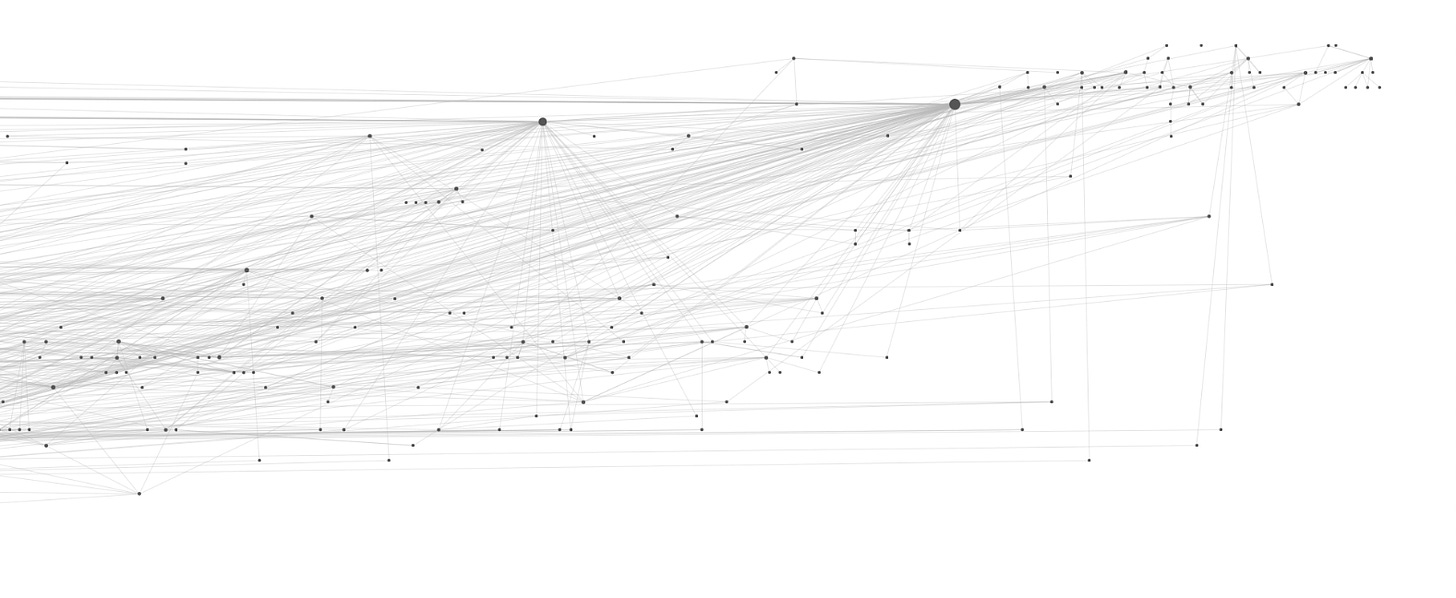Understanding NYC's Government
I’m just a guy who wants to know how my government works, so I’m finding out.
Sometimes there’s no shortcut, there’s only a longstitch.
I moved to New York City a little over two years ago, and, after deciding to stay here for the long haul, committed to investing more time and energy into improving my new home. First self-assigned task: understand the city government.1
Shortly after this point I began hitting brick wall after brick wall. Unmitigated Kool-Aid man hell.
And I suspect anyone who’s thought to themselves “I should learn more about the NYC government” will have hit them too.
The problems:
No overview: There is no good (or obvious) overview of the government—a complicated creature born of caprice, history, titanic individuals, and the occasional external shock—and all the simplified overviews I found weren’t helpful.
Discrete overwhelm: Related to the point above: the internet is filled with pages that explain discrete parts of the NYC government, but any conscientious person trying to get a grip on the whole will get the impression they’re just feeling different parts of the elephant. The connective tissue is missing. If you’ve ever tried to learn a new subject on your own, and quickly think “Huh I might just need to get a tutor,” well, it’s that feeling. Overwhelm can set in quickly.
Stumbling blocks: If you Google “New York City government overview,” (as I did a while ago) the first page that comes up is this one. It is, indeed, a simple overview of city government. But it’s clearly out of date, as Mayor Bloomberg’s been out of office for a while—not that I’m sad about this page skipping De Blasio. Needless to say this did not inspire confidence in city-provided resources.
Government doesn’t care: The government, at an institutional level, does not care that it is opaque to its citizenry.2 If it did, we wouldn’t be in this mess. While many competent individuals work for NYC, the system they work within fails in this regard nonetheless.
A test for curious New Yorkers:
Ask yourself: what’s the mayoral order of succession? Don’t even go that far—who’s number two on that ladder? Number three? A hint: there are several deputy mayors, but none of them can succeed the mayor. If you don’t know the answer to this question, you’re not alone. But if you do, then you might be. In any case, check out section 10-a.
My solution:
Instead of Frankensteining together a governmental overview from the city’s resources, or relying on external sources (CUNY, for example), I realized the most direct way would be to start from the ground up: read the city charter myself. All of it. And then proceed to other relevant law and mountains of books and blogs.
I used Roam to created a graph of the city charter, the city’s foundational legal document. I just read all ~540 pages, and, as I went along, linked relevant sections together, and tagged others. Now, instead of having a massive linear pile of paper to look through, I have a wonderfully linked, non-linear reference tool. You can see how everything fits together and interrelates.
Roam allows you to explore data visually, via search, and with ye oulde pages. Everything is tied together with bi-directional links, similar to what you’d find in a wiki. I’ve included some example pictures at the end of this post.
Although this is more time intensive, I don’t have to worry about missing much. And it provides a strong foundation going forward.
Going forward
So what to do now that I have this graph tool? Surely I understand the NYC government now!?
Well, I think I have a good grip on it, but the charter was only the beginning of my project, not the end. I’m currently mapping out NYC’s public authorities (like the MTA and NYCHA, which run the subway and the city’s public housing, respectively), the city’s dependencies on state and federal law, and more. Additionally, I’m shoulder-deep in history books, good blogs, and other things to give “government as practiced” color to the “government as prescribed” info I have.
As I’m doing all of this, I’m accruing questions and comments of my own.
So the next phase of the project is fourfold:
Clean up the graph I’ve made of the NYC charter, for potential future sharing.
Continue building other relevant graphs supported by other context-giving resources.
Create my own graphics and posts about the structure of the NYC government to share.
Find the answers to the questions I’ve heaped up after going through the charter and share them.
I’m just a guy who wants to know how my government works, so I’m finding out. Hope you’ll subscribe and come along.
If you want to support/incentivize this project further, you can leave a tip in dollars or crypto.



Oh, the hubris. It reminds of me of the time in 1966 that researchers at MIT thought solving machine vision was within the scope of a summer project. The stated end goal of this simple summer task was “…OBJECT IDENTIFICATION which will actually name objects by matching them with a vocabulary of known objects.”
To some extent, opacity is desirable in different institutions. Formal institutions often (always?) rely on informal uses of power to negotiate and get things done, and being transparent about all informal arrangements can kill off vital informal mechanisms, or just move them elsewhere that’s less effective. I’m not talking about the latter in this essay. I’m talking about huge heaps of criss-crossed, illegible red tape that impede a flourishing human society.





Great work!!!
How is this useful?